This is a really awesome intro into Context Mapping, if your getting started or even if you need a refresher.
My notes & takeaways (25)
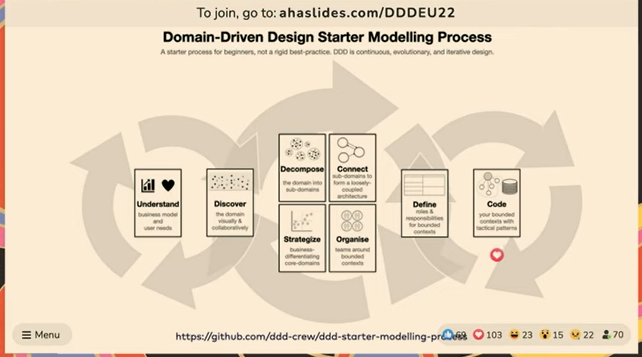 The ddd-crew github repo has a lot of tools, like the DDD starter Modelling Process to get you started
The ddd-crew github repo has a lot of tools, like the DDD starter Modelling Process to get you startedA Bounded Context is a boundary. It has it’s own language within the boundary. There is a purpose to it, too - Reusability is not key concern. Models are specific.
It can also be seen as team first boundary (Team Topologies space).
The bounded context does not show the dynamics between contexts (nor between teams).
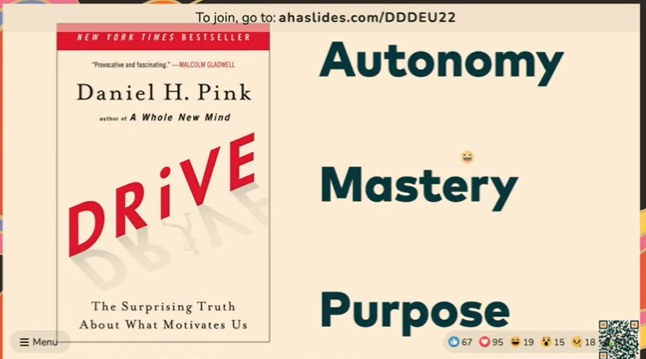 These are things we are looking to get our teams to achieve. The Bounded Context helps achieve that.
These are things we are looking to get our teams to achieve. The Bounded Context helps achieve that.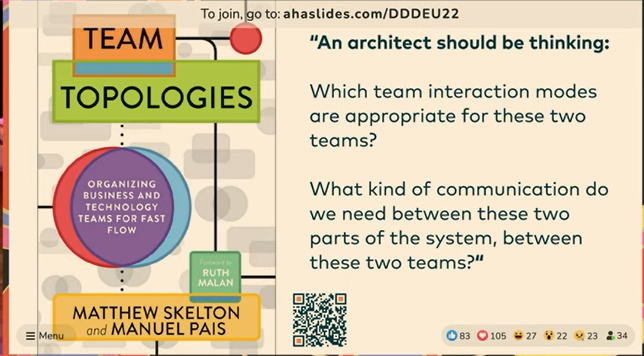
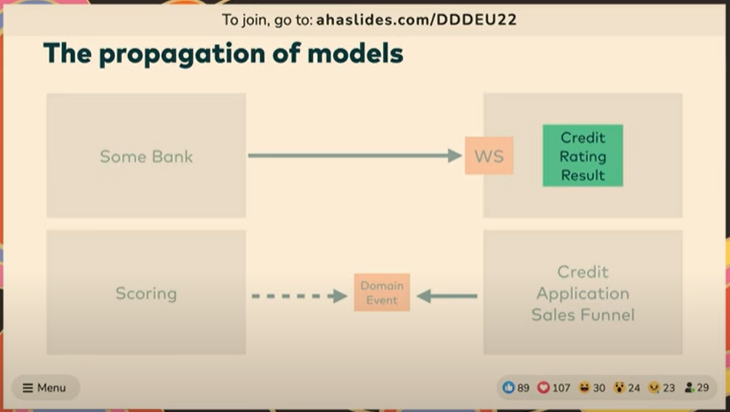 We’re used to communicating between services using REST API synchronous call or consuming events. But we can see other types of communication. For instance, the propagation of models based on the messages passed back and forth is an effect. There is always some type of coupling.
We’re used to communicating between services using REST API synchronous call or consuming events. But we can see other types of communication. For instance, the propagation of models based on the messages passed back and forth is an effect. There is always some type of coupling.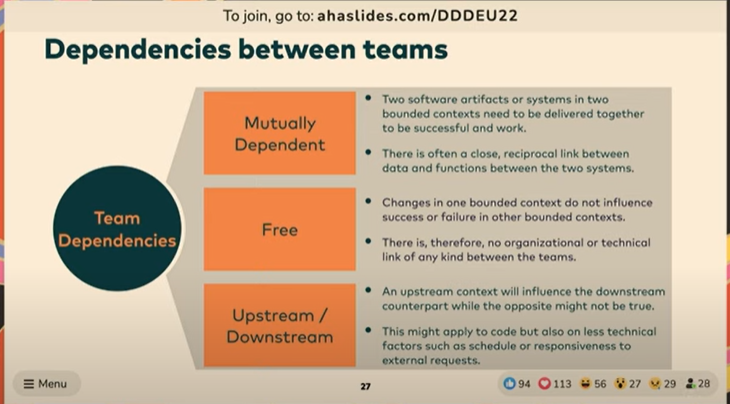
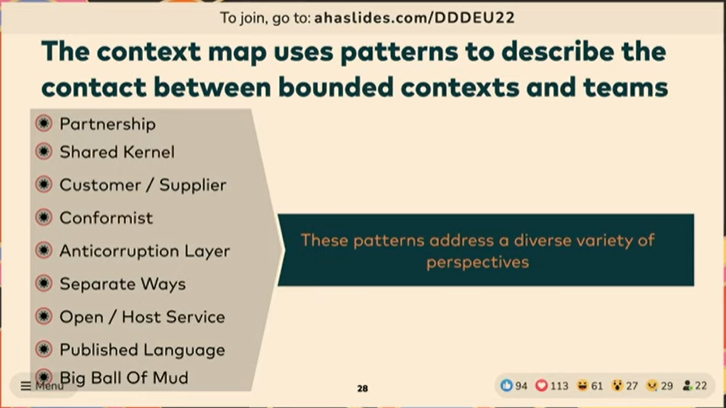
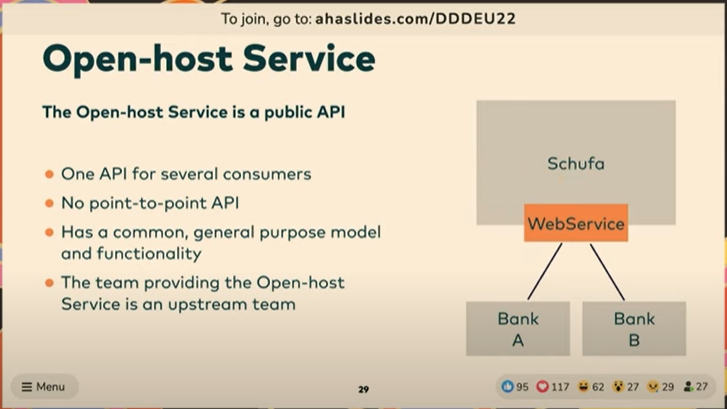 One API for several consumers. API provider (Open host provider) is generally Upstream. Rare cases where the Open-host service (power control) is downstream is in regulator related scenarios.
One API for several consumers. API provider (Open host provider) is generally Upstream. Rare cases where the Open-host service (power control) is downstream is in regulator related scenarios.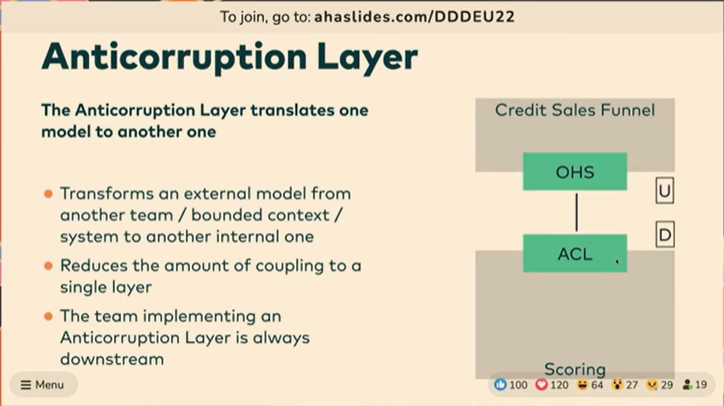
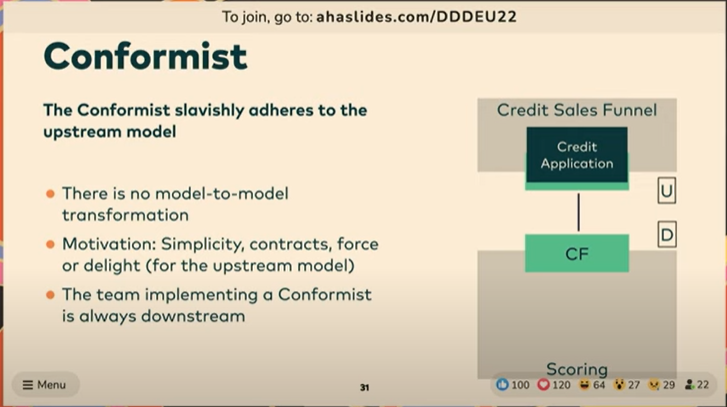 Conformist just takes and consumes upstream model
Conformist just takes and consumes upstream model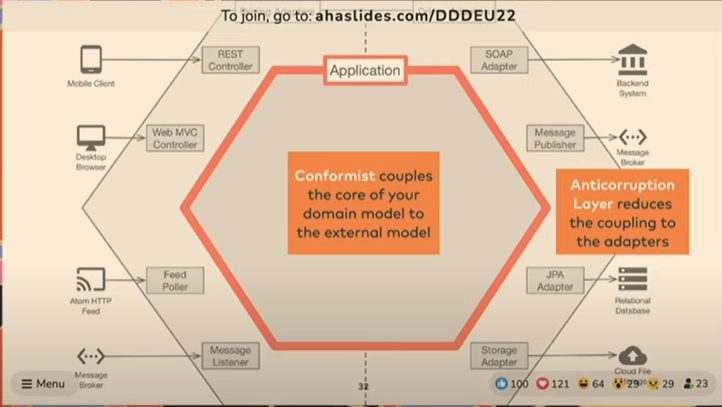 ACL is not about decoupling (because you can’t) - it’s about loose-coupling.
Conformist is deep coupling
ACL is not about decoupling (because you can’t) - it’s about loose-coupling.
Conformist is deep coupling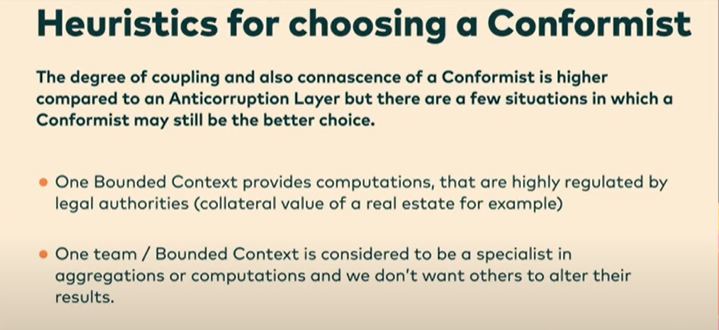 There are heuristics towards choosing Conformist. It does reduce effort when choosen.
There are heuristics towards choosing Conformist. It does reduce effort when choosen.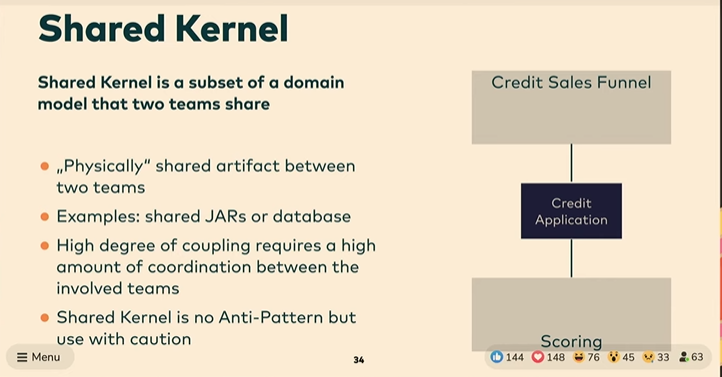
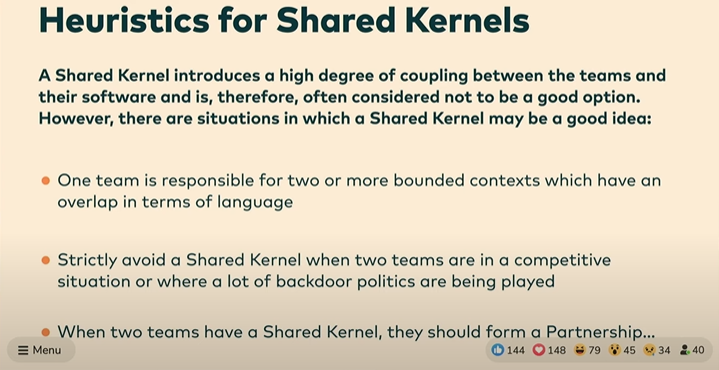 There’s heuristics for it too. It can be a trade-off. Avoid it, for sure, if teams are in a competitive nature - it becomes toxic (politics).
There’s heuristics for it too. It can be a trade-off. Avoid it, for sure, if teams are in a competitive nature - it becomes toxic (politics).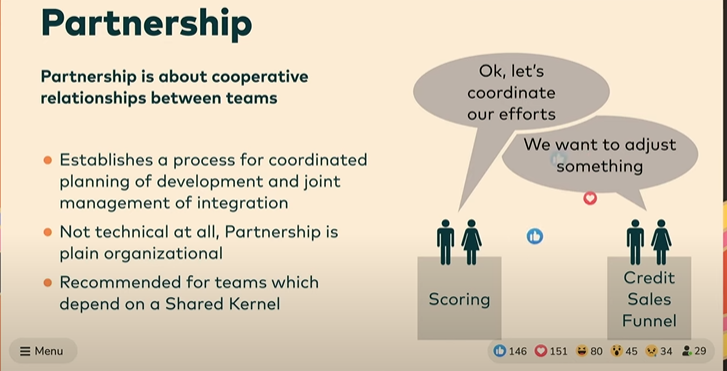 Needed for shared kernels - establishes cooperative relationships.
Needed for shared kernels - establishes cooperative relationships.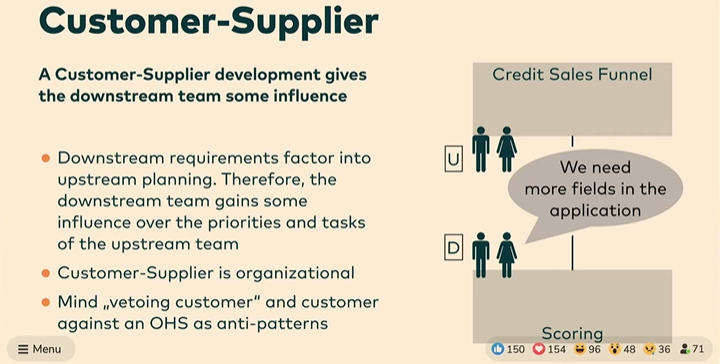
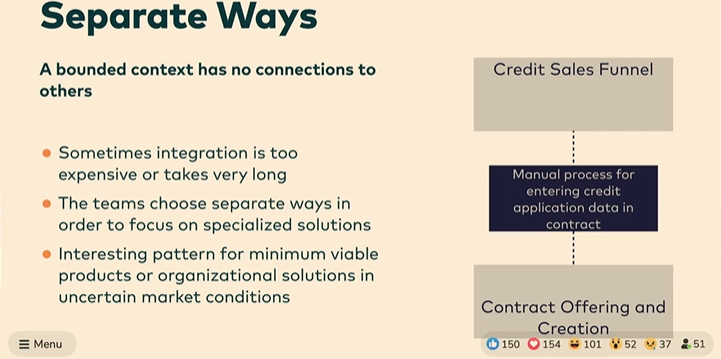 It’s a Free-style relationship. Very expensive.
It’s a Free-style relationship. Very expensive.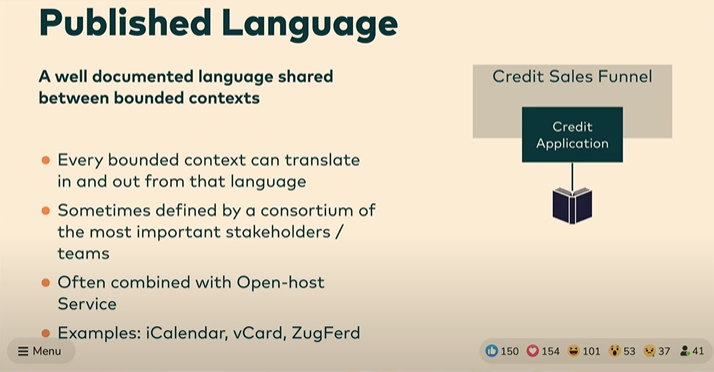
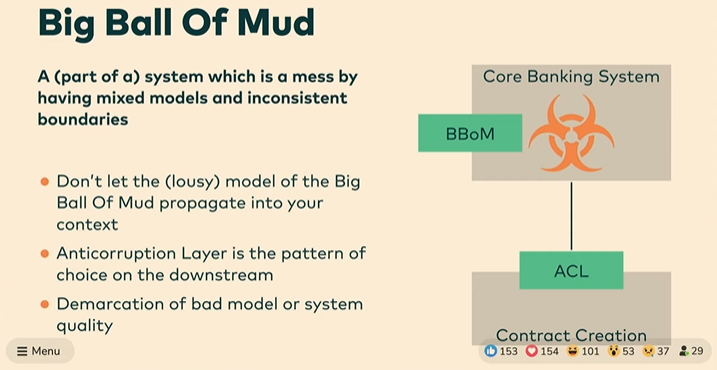 it’s a warning sign; You want ACLs against these.
it’s a warning sign; You want ACLs against these.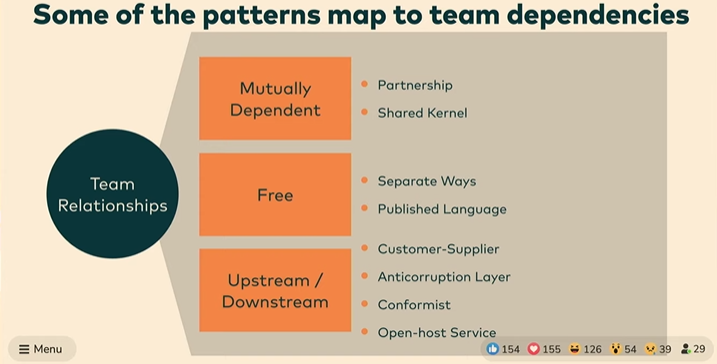
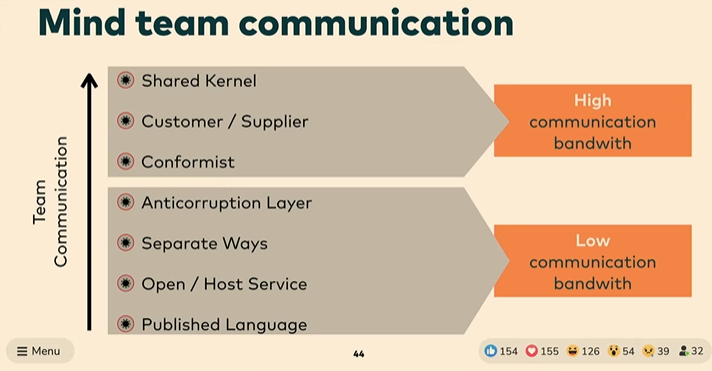 Describes communication patterns too
Describes communication patterns too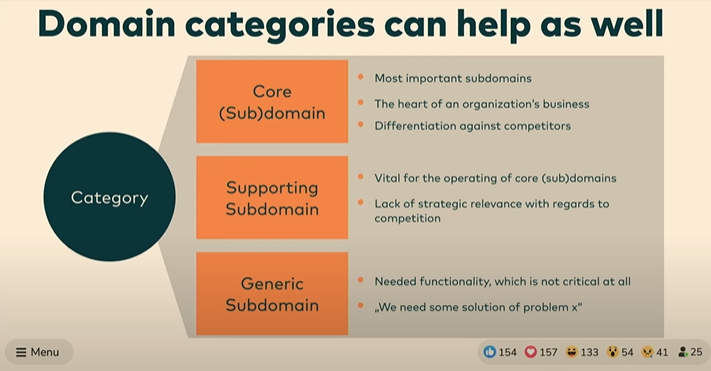 Affects domain types, too
Affects domain types, too